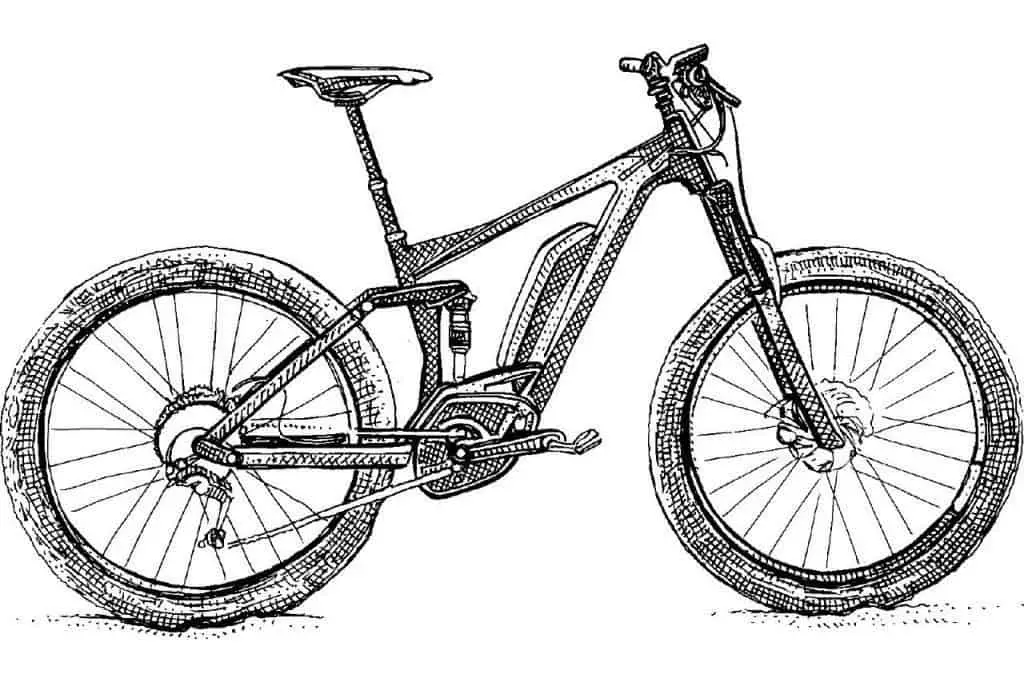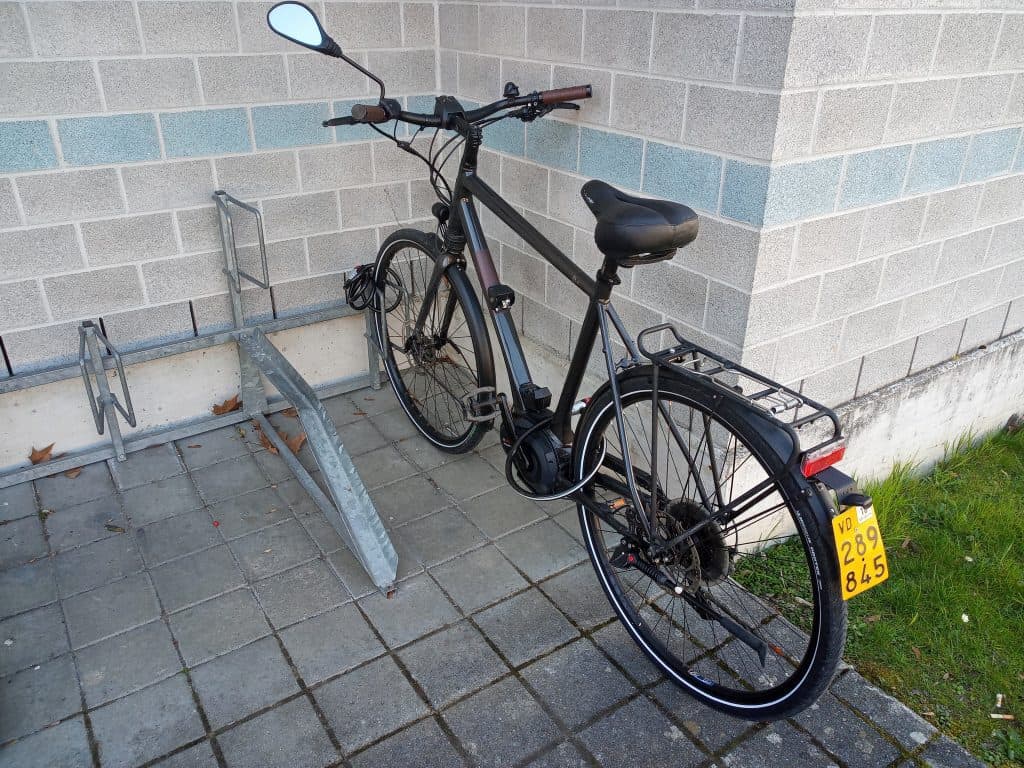Last Updated on July 14, 2023 by fiverr_login

There is a saying that necessity is the mother of all inventions. It was only due to a necessity that early man-made fire to cook raw food, made tools for the cultivation of crops, made weapons of stones to hunt and protect himself from wild animals.
With the passage of time, man learned to make wooden wheels by logs of wood as the movement from one place to another seemed necessary. As time passed by and interactions between people grew, more and more modes of transportation came to light.
Are electric bikes good for the environment? Yes, electric bicycles are certainly good for the environment as they use electric power (along with human power) to push them forward. If one charges the battery using green solar power, e-bikes become 100% environmentally friendly and good for the environment.
Environmental concerns drive up demand for e-bikes
In the year 1817, Baron Karl Von Drais developed a bicycle (Wikipedia link). German inventor Gottlieb Daimler developed a motorcycle in the year 1885 (another Wikipedia link).

In fact, the most important invention of the last century was the invention of the petrol and diesel engine. The transportation sector has been revolutionized every bit. Speed has converted days into hours, hours into minutes, and seconds.
Passenger comfort and “less strain on human muscles” are guiding forces behind it.
But this rapid modernization in the transportation sector guzzles a lot of fuel. Increased levels of pollution and global warming are demerits of excessive usage of petrol and diesel vehicles.
Read also: Top 10 mental benefits of riding an electric bike. And, Can riding an e-bike improve mental health.
To overcome these problems scientists have come up with a concept of e-vehicles (i.e.) electric vehicles.
The greatest advantage of e-vehicles is that they do not use fuels such as diesel and petrol and hence do not emit fuming exhausts (these exhausts are very detrimental to health).
Electric Bicycles (also known as e-bikes) are the most important vehicles under the category of electric vehicles. These are very much user-friendly for commuting within city limits.
These e-bikes are basically simple bicycles fitted with an electric motor that augments their speed. Worldwide there are many types of electric bicycles ranging from the ones which have a small motor which assists in easy pedaling (less exertion) to the ones having more powerful motors which resemble very closely to mopeds.
Read also: Are electric bikes cheating (backed by research)? And, Are electric bikes good for fitness?
However, all-electric bicycles have the ability to be pedaled by the rider in case of battery discharge or any other fault in the motor.
Batteries and designs will improve with time
These e-bikes nowadays mostly use Lithium-ion rechargeable batteries whose rate of self-discharge is quite low. They have a greater energy density and last for at least 2-3 years. These batteries are capable of driving the e-bike at a speed of around 25 km/h for a distance of around 40-45 kilometers on one complete charge.
Moreover, many of the batteries are portable. This means that if you have a solar panel at home, it can be recharged by it. It implies “pure savings and nothing else”.
With the advancement in technology, more lightweight yet sturdy e-bikes come to the market. These models use more powerful motors. Modern models use better shockers as well, which helps with smoother rides.
More recent futuristic models include better tail and front lamps, a navigation system, battery level indicator, odometer, and digital speedometer.
Many models of electric bikes use both mechanic gears and several electric assist levels to provide the rider with better comfort along the ride. The rider is able to adjust the gears according to personal comfort and need.
Read also: What is the difference between e-bike batteries? And, How far can e-bikes go? What is the e-bike range?
Why electric bicycles?
Over the past few years, the sales of e-bikes have shown a remarkable increase. It is due to the host of benefits that this amazing machine offers. Some of them are enlisted below:

Pocket-friendly
With oil prices soaring to new heights in the international market, driving cars with conventional fuels surely burns a big hole in the pocket. E-bikes have come as a great rescue.
They have a great mileage per charge and when compared with their petrol-driven vehicles, these are certainly less costly.
Moreover, if one charges the battery with green solar power, it is simply the case of “100% savings”. And there is now often an option to rent a modern e-bike for 20-30 USD (or euro) per month, including insurance and maintenance.
Read also: How much does it cost to own an e-bike? And, What is the difference between cheap and expensive e-bikes?
Environmentally friendly
Apart from being pocket-friendly, e-bikes are environment-friendly too. As these are electrically driven, there is no carbon emission.
By using e-bikes we can make our small contribution towards Mother Earth. Further, as these are exhaust-free, there is no need to get a “pollution-control” certificate every time from authorities.
No sound pollution
Electric bicycles do not emit any kind of sound – or very very little (as made by motorbikes running on petrol fuel) so, no case of sound pollution.
Read also: Do electric bicycles make noise? And, Are electric bikes good for exercise?
Easy to maintain, less hassle
Electric bicycles do use not as much machinery compared to motorbikes, consequently easier to maintain. Yes, you still have to maintain your e-bike and do a regular motor, electric system, and battery checkup, at least, once a year.
No more or little insurance premiums
As e-bikes do not come under the category of motor vehicles due to somewhat less powerful motors and speed regulation, so e-bikes usually require no or small insurance premiums. It saves a considerable amount of money.
Also, in most countries, no license is required to drive an e-bike. Just mount your e-bike and ZOOM!!
More fun and more health
Not only e-bikes are great fun to drive, riding an e-bike is equally good for health. Riding an e-bike develops and strengthens core muscles. Plus it provides a medium intensity workout for bones, joints, and ligaments. An e-bike rider inhales more fresh air.
Stress release
E-biking facilitates the release of stress and increases “Happy Hormones”. Moreover, riding an e-bike makes people more alert and responsive. There are more and more studies that discover this positive effect of riding an e-bike.
Some e-biking rules, but not that many
There are some legal requirements for e-bikes in various countries around the world. Most of the legal requirements are concerned with the maximum power of the motor involved.

Another important aspect is the maximum attainable speed of these vehicles. It is because children below eighteen years also drive these e-bikes and their safety is a prime concern.
The maximum power of the electric motor of e-bikes in the U.S. should be less than 750 watts and the top speed should be below 32 km/h (when powered exclusively by a motor).
Here it is essential to note that in case the speed of the e-bike crosses 32 km/h, the motor would stop propelling the bike.
Read also: Do you need a license to ride an e-bike? And, Do you need insurance to ride an e-bike?
In the European Union, it is legally binding that should an e-bike exceed the speed of 25 km/h, motor power assistance cuts off. But in certain countries, such as, for example, Denmark, e-bikes can drive at a speed of 45 km/h provided riders cycle on a bicycle track and wear a helmet.
Separate regulation exists for speed electric bikes, which are designed to go up to 45 km/h.
As another example, under the Indian laws, the speed of e-bikes has been capped at 30 km/h. Moreover, it is obligatory for all-electric vehicles to be approved by ARAI (i.e.) Automotive Research Association Of India.
Future prospects for e-bikes
It is a plain fact that e-bikes have a very bright future in the coming years. It is a way towards “sustainable development” (i.e.) advancement not at the cost of the environment.
Scientists and engineers are coming up with novel ideas to make e-bikes more and more relevant for the common man. One of such developments is to make e-bikes more stable on the road, based on recent research from the Netherlands.
One of the most important advancements is the use of aluminum or carbon to manufacture frames for e-bikes. This is due to the fact that those are lighter materials and by incorporating these materials, the net weight of e-bike can be reduced drastically. It bears less stress on the electric motor on the rider.
Read also: Are electric bikes worth the money? Are e-bikes any good? And, What are the disadvantages of electric bikes?
The second important advancement involves integrating the battery into the frame of the e-bike itself. By doing this, the product looks more attractive and graceful. The battery is also protected from external factors as rain, dirt, and dust.
Manufacturers of e-bikes are making efforts on producing lightweight batteries. Lighter batteries will not only make e-bikes not as heavy but will also make it easier for riders to take along a spare battery for long-range trekking.
Easy Fact: The average weight of currently used e-bike batteries is around 2-3 kg.
Expectations from governments and industry
Governments should proactively promote more and more usage of e-bikes as these are pollution-free and hence “environment saviors”. Large production firms can rent out (and some already do) these elegant machines via apps to people according to their requirements on nominal usage charges.
Related questions
What is the environmental impact of e-bikes? As per Wikipedia, electric bicycles are zero-emission vehicles (Wikipedia link). This means that they emit nearly nothing into the environment – no exhaust, no noise, no other pollution. Compared to any other motor-powered type of transportation, e-bikes have hardly any negative impact on the environment.
Do e-bikes consume energy? As electric bicycles are powered by electric motors, they do consume electric energy. But the level of energy consumption is much smaller compared to any other type of transportation, be it a motorbike or moped, or a car.
Moreover, the fact that the rider can also pedal an electric bike, further reduces the level of energy consumption, making e-bikes one of the most eco-friendly methods of transportation.
Do electric bikes recharge while pedaling? Most of the existing electric bike models do not recharge the battery while pedaling. Some models offer an “exercise” or “recharge” mode or use regenerative braking. Those technologies are not fully developed yet.
This regenerative motor mode leaves the electric motor on while the rider pedals the bike forward, which essentially turns the motor into an electric generator. The same approach is used with regenerative braking. The best way to recharge the battery is still to plug it into a power outlet.
Let us know how we are doing! Have another question or a recommendation for us? – reach us via this contact form.
Igor is a sustainable mobility and green energy advocate. His mission for Easy E-biking is to help make electric cycling simple, practical, and fun. Follow him on Facebook and LinkedIn.




